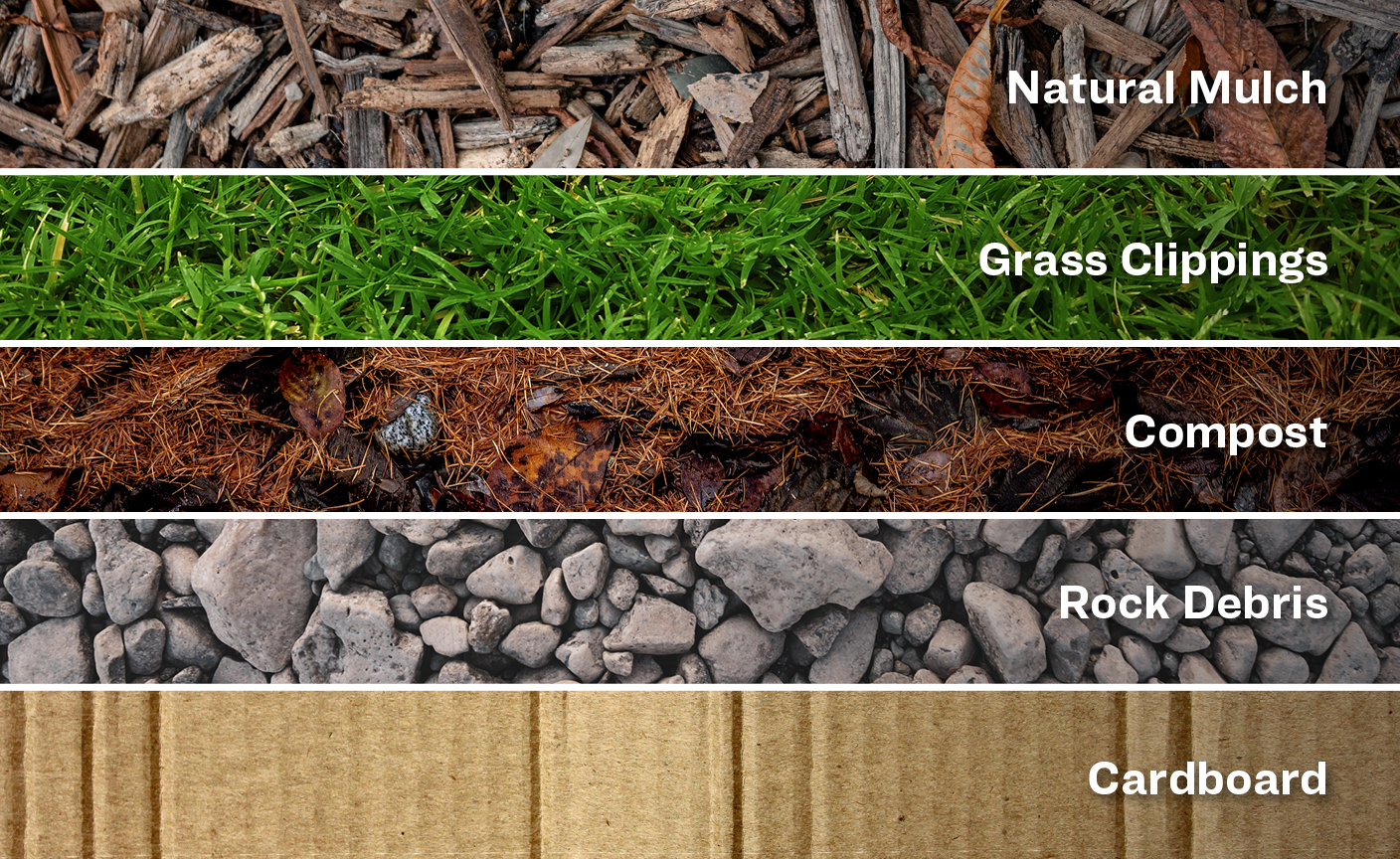Getting Started:
To make a new lasagna bed, first take stock and collect your materials. The “recipe” for each person’s lasagna will differ, depending on where they live and what materials are available locally. Here are some samples. The amount of material you need will depend on the size of the bed you want to create. (Hint: you always need more material than you think you will).
Greens: grass clippings, garden trimmings, leafy greens from the kitchen, coffee grounds or brewed tea, crushed eggshells, seaweed, animal manure from herbivores.
Browns: shredded dry leaves, dry pine needles, peat moss, shredded newspaper, straw (make sure it does not contain weed seeds), dry corn stalks, chipped up tree branches, twigs, sawdust.
It may take some time to collect all your materials. You’ll need about twice the amount of browns than greens, and about half the amount of greens in compost or gardening topsoil.
For the bottom layer, collect uncoated cardboard with the tape and staples removed, or a stack of newspaper.
Tools: shovel or spade for adding manure or compost to the lasagna beds. A pitchfork or mulching fork works best when shoveling hay or dry leaves. Twine may be helpful when marking out the size of the bed, and a trowel is excellent for planting seedlings. A hose or watering can will be necessary to dampen the lasagna layers when building the bed, and for keeping it most through the summer season.
https://garrettwade.com/product/professional-4-tine-gardening-fork
https://garrettwade.com/product/professional-mulching-fork
https://garrettwade.com/product/jute-twine-4-rolls
https://garrettwade.com/product/hand-forged-trowel
https://garrettwade.com/product/stainless-steel-ga...
https://garrettwade.com/product/galvanized-watering-can-with-wooden-handle-usa-made
Building the Bed:
Begin by measuring out your bed area. You can do this with stakes and twine—or even use wood to build a frame around the space. This is helpful in creating a clean edge on the bed, but isn’t strictly necessary. Stones or other hardscaping material can also be used, but it’s possible to build a successful mounded lasagna bed with no edging.
Spread the area with the cardboard, making sure to overlap the edges by several inches, so weeds will not grow through. If you are using newspaper, submerge it in water first, to moisten completely before spreading.
If you have any twigs or brushy garden trimmings, chop them in finger length pieces and use this as a first layer to promote drainage (about 3-4 inches). Follow this with a thick layer (6-8 inches) of dry leaves or straw and use a hose to water the materials well. Top this with 2 inches of compost or topsoil and continue again with a 4-inch layer of greens, 8-inches of browns, and 2-inches of compost or soil. Water as you put the layers down; the goal is for everything to be moist but not overly soggy.
The top layer of the lasagna bed should be soil, or a mix of soil and compost. If you are building your bed in the fall, it’s a good idea to protect it over the winter by either spreading out burlap sacks, adding a topping of hay, or by planting a cover crop.
Many people do build lasagna beds in the fall, as dry leaves and plant matter from spent summer crops (corn stalks and other annuals) are abundant and can be used to build the beds. This also allows the beds to decompose over the winter, and by spring the soil is loose and ready for spring planting. It’s not essential to start your beds in the fall, however, spring-made beds can be planted into as well. If you are building lasagna beds in spring, however, it’s best to make the top soil/compost layer thick. A six-inch top layer will provide your plants with plenty of room to spread their roots while the lower layers are breaking down. You could also cover a spring bed with black plastic or a tarp for a few weeks to help the bed “cook” a little bit before planting in it.
Lasagna beds are particularly good places to plant tomatoes and other heavy feeding plants like pumpkins, as the nitrogen supplied in composting process will give you an impressive harvest. Just run stakes into the beds if you want to tie the tomatoes up, and be prepared for the squash vines to jump their bed and wander; they are vigorous growers when given adequate nutrition.
In terms of maintenance, it’s good to mulch your beds through the growing season with straw, or a mix of straw and grass clippings. This helps with decomposition and will make sure the beds do not dry out (test the moisture level by digging down with a trowel throughout the season, to make sure they are getting enough water: the goal is moist, not soggy). Water as needed, and plan to add an extra lasagna layer (greens, browns, and compost) or two to your beds each fall in order to keep them at peak function. As the layers break down the soil level will drop, so you’ll want to make sure to replenish the beds each year.
Imagine how delicious the lasagna you make with vegetables grown in your lasagna bed will be!
___
Tara Austen Weaver is the author of Orchard House, Growing Berries and Fruit Trees in the Pacific Northwest, and the Little Flower book series. She is trained as a master gardener, permaculture designer, and master composter/soil builder. She tends a large garden and orchard in Seattle, WA.




